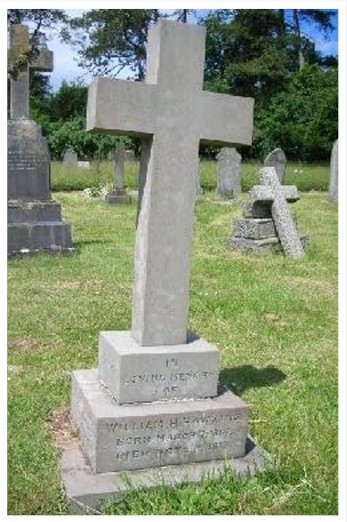2nd Battalion, Gloucestershire Regiment

William Henry Hawkins was born in Sheepscombe, Gloucestershire in 1887.
Prior to enlistment in the Army he was a mill h a n d, who had served time in the Gloucestershire Regiment Militia. On 19 January 1905, aged 18, he signed on for eight years, with a further nine in the Reserve.
Following initial training he joined the 2nd Battalion of the Glosters on 22 May 1905. Between 1907 and the completion of his initial eight years ‘with the colours’ he saw service in India and Malta.
As a Reservist he was mobilised on 5 August 1914 and was posted to the 1st Glosters. On 13 August he was in France with the BEF and took part in the ‘Retreat from Mons’. On the 26 August he received a gun shot wound in his calf at Le Favril, near Landrecies. He was sent to No 2 General Hospital at Le Havre before being re-patriated and admitted to Cambridge Hospital, Aldershot on 30 August. He stayed in hospital until 11 September and upon discharge remained in the UK until 22 November 1914.
On 23 November 1914 he returned to the Western Front and re-joined the 1st Glosters, now located near Langemark. On 30 December he was treated in a field ambulance for an abscess on his foot. His condition was sufficiently serious for his repatriation to the UK on 3 January 1915.
On 18 May 1915 he was back in the Ypres Salient, this time with the 2nd Glosters. At the end of May the battalion was withdrawn to the quieter Armentieres sector and on 25 November 1915 sailed from Marseilles for Salonika, arriving on 12 December. Whilst on the voyage he was promoted to Corporal. Whilst in Salonika he was diagnosed with pulmonary tuberculosis and was sent to Cairo and thence to England on 17 January 1916.
A medical board found him to be ‘no longer fit for military service’ and he was discharged from the Army on 27 February 1916. At that time treatment for tuberculosis was very limited and eventually it was responsible for his death on 1 November 1918, aged 31.
He was buried in Painswick Cemetery, where a privately erected stone cross marks his grave. He is commemorated on the Painswick War Memorial.
(Research by Graham Adams for the Branch’s Gloucestershire War Graves Project)
